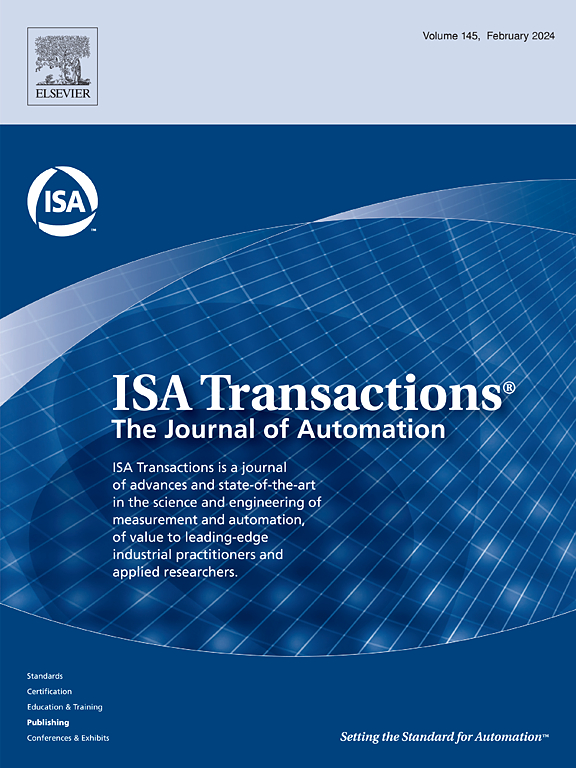利用有限的运行至故障数据预测剩余使用寿命:结合模式依赖性 RVM 和相似性的贝叶斯集合方法。
IF 6.3
2区 计算机科学
Q1 AUTOMATION & CONTROL SYSTEMS
引用次数: 0
摘要
准确预测剩余使用寿命(RUL)对于工业系统的预测性维护至关重要。虽然数据驱动的剩余使用寿命预测方法受到了广泛关注,但这些方法通常需要大量的运行到故障(R2F)数据,而这些数据在实际应用中往往无法获得。如果处理不当,使用数量有限的 R2F 轨迹进行训练不仅会导致 RUL 预测误差过大,还会给量化预测不确定性带来困难。为解决上述难题,本文提出了一种贝叶斯集合 RUL 预测方法,该方法结合了与模式相关的相关性向量机(RVM)和轨迹相似性。首先,本文提出的方法将长度不等的历史 R2F 轨迹聚类为不同的退化模式,并通过使用与模式相关的核函数库和相似轨迹,构建基于 RVM 和相似性的预测,从而提高预测精度。其次,提出的贝叶斯集合方案融合了基于 RVM 和相似性的预测,并量化了相关预测的不确定性,即使历史 R2F 轨迹的数量有限。在涉及轴承和电池的两个案例研究中,分别只使用了 11 条和 16 条 R2F 轨迹作为训练数据,与现有的三种方法相比,所提出的方法将 RUL 预测的平均绝对百分比误差降低了 20% 以上。本文章由计算机程序翻译,如有差异,请以英文原文为准。
Remaining useful life prediction with limited run-to-failure data: A Bayesian ensemble approach combining mode-dependent RVM and similarity
Accurate prediction of remaining useful life (RUL) is crucial for predictive maintenance of industrial systems. Although data-driven RUL prediction methods have received considerable attention, they typically require massive run-to-failure (R2F) data which is often unavailable in practice. If not properly addressed, training with a limited number of R2F trajectories not only leads to large errors in RUL prediction, but also causes difficulty in quantifying the prediction uncertainty. To address the above challenge, this paper proposes a Bayesian ensemble RUL prediction method that combines mode-dependent relevance vector machine (RVM) and trajectory similarity. Firstly, the proposed approach clusters historical R2F trajectories of unequal lengths into different degradation modes, and constructs RVM and similarity based predictions with improved accuracy by using mode-dependent libraries of kernel functions and similar trajectories. Secondly, the proposed Bayesian ensemble scheme fuses the RVM and similarity based predictions, and quantifies the associated prediction uncertainty even though the number of historical R2F trajectories are limited. In two case studies involving bearings and batteries, using only 11 and 16 R2F trajectories as training data, respectively, the proposed method reduces the mean absolute percentage error of RUL prediction by more than 20% compared to three existing methods.
求助全文
通过发布文献求助,成功后即可免费获取论文全文。
去求助
来源期刊

ISA transactions
工程技术-工程:综合
CiteScore
11.70
自引率
12.30%
发文量
824
审稿时长
4.4 months
期刊介绍:
ISA Transactions serves as a platform for showcasing advancements in measurement and automation, catering to both industrial practitioners and applied researchers. It covers a wide array of topics within measurement, including sensors, signal processing, data analysis, and fault detection, supported by techniques such as artificial intelligence and communication systems. Automation topics encompass control strategies, modelling, system reliability, and maintenance, alongside optimization and human-machine interaction. The journal targets research and development professionals in control systems, process instrumentation, and automation from academia and industry.
 求助内容:
求助内容: 应助结果提醒方式:
应助结果提醒方式:


